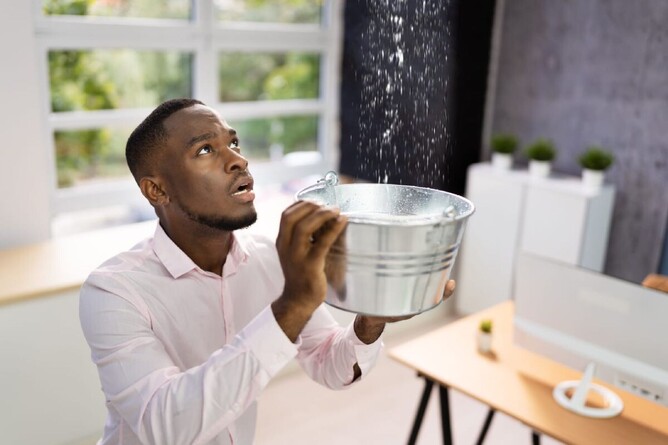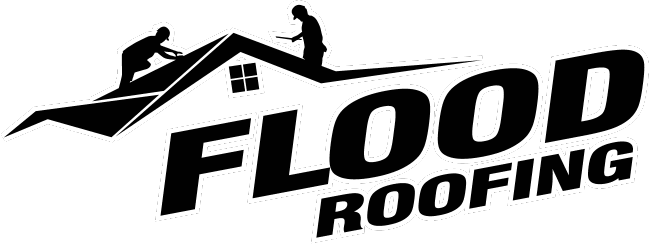Bay of Islands weather is breathtaking one moment and brutal the next. From postcard-blue skies to sudden sideways rain, your roof has to perform under some of New Zealand's toughest coastal conditions. That's where Flood Roofing, the leading Bay of Islands Roofing Specialists, comes in.
Based in Kerikeri and servicing the entire Bay of Islands region (including Kaikohe, Kawakawa, Paihia, and Ōkaihau) we've built a reputation since 2016 for roofing that lasts in Lower Northland's unique coastal climate. Whether it's a full roof replacement, a new installation, or urgent leak repairs, we combine licensed expertise with premium materials like COLORSTEEL® and ColorCote® to deliver results you can trust.
At Flood Roofing, we believe roofing is about protecting your home, your business, and your peace of mind. With every project, we guarantee licensed Building Practitioner (LBP) oversight from start to finish, a 100% price guarantee with no hidden surprises, durable climate-ready systems designed for coastal salt air and high winds, plus tidy workmanship and communication that keeps you in the loop.
Whether your roof is showing its age, storm damage has exposed weak spots, or you're planning a brand-new build, Flood Roofing are the Lower Northland Roofing Specialists homeowners and businesses trust to keep the weather where it belongs.
Key Takeaways
Before diving into the common pitfalls, here are the five most important things every Kerikeri and Bay of Islands homeowner should know about protecting their roof:
• Sealant isn't a solution: Most leaks need proper diagnosis and structural repairs, not just silicone
• Coastal conditions demand marine-grade materials: Standard fasteners and coatings fail quickly in Lower Northland's salt air
• Condensation mimics leaks: Poor ventilation causes "drips" even on sunny days
• Cheap quotes hide expensive problems: Proper detailing and quality materials save money long-term
• Prevention beats repairs: Regular maintenance and honest assessments prevent costly emergencies
Prevention is only half the battle. Knowing the right season to schedule major work can save you stress and money. See our advice on the best time of year to replace your roof.
The Silicone Band-Aid Trap
Many Lower Northland homeowners see a drip, grab a tube of silicone, and hope for the best. While a quick squirt might hide the problem temporarily, it never addresses the real cause. Our coastal climate is unforgiving. Salt air, sideways rain, and gusty winds push water into every gap, and sealant alone can't withstand these forces. By the time the "fix" fails, water has travelled through insulation and framing, creating bigger damage.
Most leaks aren't caused by missing silicone. The real culprits are usually short or poorly detailed laps that let water track inside, flashings not matched to the correct profile or pitch, fasteners and washers that have fatigued in the salt air, or missing breathable underlay that allows condensation to mimic a leak.
At Flood Roofing, we don't guess. As Licensed Building Practitioners (LBPs), we trace the water path and diagnose the real source, correct laps and flashings with proper detailing, replace incompatible fasteners with exposure-rated ones, and install or upgrade underlay and ventilation systems.
Watch for brown tea-like stains near corners, skylights, or flues, drips that only appear during crosswind rain, and rust trails near overlaps or fasteners. Sealant should be the finishing touch, not the fix.
Choosing the Wrong Materials for Coastal Conditions
Too often, homeowners choose roofing steel by colour and price. While the roof may look sharp initially, if the wrong grade is used for Lower Northland's salty environment, problems appear fast: rust streaks, bubbling paint, and failing fasteners. Sea spray and humidity travel inland while nor'westers push moisture deep into laps and junctions.
Roofing is a complete system, not just sheets. It includes steel substrate and coating grade, profile and detailing, fasteners and washers matched to the system, plus underlay and ventilation. Get one part wrong (like pairing marine-grade steel with cheap fasteners) and you've created a weak point where rust will spread.
As Lower Northland Roofing Specialists, we assess your exposure zone, specify long-run steel from COLORSTEEL and ColorCote in the correct grade, match fasteners to the roofing system, isolate dissimilar metals to prevent galvanic corrosion, and detail laps correctly with capillary breaks where needed.
Warning signs include rust streaks from screws or overlaps, paint bubbling on the sea-facing side, uneven colour fading where wind drives salt, and stains where different metals touch your roof.
When "Leaks" Are Actually Condensation Problems
Many homeowners assume every drip means the roof has sprung a leak. But in Lower Northland, many "leaks" aren't caused by rain at all. They're caused by poor ventilation inside the roof cavity.
Lower Northland is humid year-round. Warm, moist indoor air rises into the roof cavity. When it meets the cool underside of steel roofing, condensation forms like dew on a cold morning. Without airflow, this moisture drips back down, staining ceilings and rotting insulation. Non-breathable underlay and blocked eaves trap the moisture, creating a cycle that repeats daily.
We ensure your roof can breathe by balancing airflow with intake at the eaves and exhaust at the ridge, installing breathable synthetic underlay, redirecting bathroom and kitchen fans to vent outside (not into your roof space), and carefully detailing around penetrations to keep airflow open yet watertight.
Look for drips on sunny mornings, condensation around downlights, damp insulation or musty smells, and rust spots on the underside of roofing sheets. If water appears when it hasn't rained, you have a ventilation problem.
Detail-First Approach to Laps and Flashings
Some roofs look tidy initially, but shortcuts in laps and flashings create hidden weaknesses. In the Bay of Islands, rain doesn't just fall (it climbs). Crosswinds drive water uphill into overlaps, ridges, and valleys. Poor detailing lets moisture creep into seams through capillary action, especially when laps are cut short or flashings aren't matched to the correct profile.
As Licensed Building Practitioners, every roof is installed to manufacturer specifications with correct lap lengths, capillary breaks, profile-matched flashings, and exposure-rated sealants used only as secondary defence.
When Fasteners Fail First
In Lower Northland, fasteners usually fail before roofing sheets. Salt air attacks unprotected fasteners aggressively. Add strong winds and humidity, and you'll see rust streaks, loose sheets, and creaking roofs far sooner than expected.
"Standard" fasteners corrode quickly in coastal conditions, while over- or under-torqued screws compromise weather-tightness. We specify marine-rated screws and washers with correct torque settings and metal isolation to prevent corrosion hotspots.
Smart Drainage and Other Critical Details
Gutters that double as leaf collectors cause serious damage through overflow and ponding. We install correct falls and downpipe sizing, add gutter guards where needed, and recommend seasonal maintenance.
DIY penetrations rarely end well. Generic flashings and over-reliance on sealant almost always fail when sideways rain puts extra pressure on roof holes. We use manufacturer-approved penetration kits matched to roof profile and treat penetrations like surgery: precise and watertight.
The cheapest quote often hides the cheapest scope. Missing underlay, short laps, and standard screws look fine initially, but Lower Northland storms expose every shortcut. We provide transparent quotes with clear options and guarantee our 100% price promise.
Some roofs get patched long after they should be replaced. Once multiple leaks appear in Lower Northland's coastal conditions, patching becomes expensive and ineffective. We provide honest assessments with photo evidence and clear advice on when to repair vs re-roof.
FAQs - Lower Northland Roofing Specialists
How do I know if I need a repair or a re-roof?
If issues are localised (like a few tired flashings or fasteners) a repair makes sense. If corrosion is widespread, leaks keep returning, or the roof coating is failing, re-roofing is the smarter choice. Flood Roofing will show you photos and give you a straight answer.
What roofing materials suit Lower Northland's climate?
We recommend long-run steel roofing with marine-grade COLORSTEEL or ColorCote coatings, matched with exposure-rated fasteners, breathable underlay, and proper ventilation.
Why do I sometimes see drips on sunny days?
That's often condensation, not rain. Lower Northland's humidity creates moisture inside the roof cavity. Balanced airflow and breathable underlay fix this issue.
How often should I maintain my roof?
At least seasonally, and before storm season. Clear gutters, rinse off salt deposits, and get an LBP inspection to catch small issues before they turn into costly repairs.
Are Flood Roofing installers Licensed Building Practitioners?
Yes. Every project is overseen by an LBP, ensuring your roof meets the NZ Building Code and performs properly in Lower Northland's coastal conditions.
Why Kerikeri Chooses Flood Roofing
Lower Northland weather is beautiful but brutal. Salt air, sideways rain, and nor'westers test every roof. The mistakes above all share one theme: when shortcuts are taken, it's the homeowner who pays the price. Don't let common roofing mistakes cost you more than they should.
Flood Roofing has been proudly serving Kerikeri and the Bay of Islands since 2016. We're a family-run team of Licensed Building Practitioners known for quality workmanship, in-house scaffolding, and durable roofing solutions built specifically for Lower Northland's coastal climate.
We don't just patch symptoms. We diagnose, detail, and deliver roofing systems that perform. With premium materials like COLORSTEEL and ColorCote, exposure-rated fasteners, breathable underlay, and ventilation tailored to coastal humidity, we make sure your roof stands strong for years to come.
Whether you need quick spouting repairs, urgent leak fixes, or a complete roof replacement, we offer expert advice, honest pricing with our 100% price guarantee, and long-lasting results that stand up to Lower Northland weather. We service Kerikeri, Paihia, Kaikohe, Kawakawa, Ōkaihau, and surrounding areas.
Ready to protect your home the right way? Work with Flood Roofing, the Lower Northland Roofing Specialists homeowners and businesses call first when coastal weather turns.
Call 0800 4 FLOOD to speak with a local roofing expert or book your free, no-surprises quote today. Let's keep the weather where it belongs (outside).



